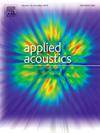Gearbox noise and vibration control based on multiple-objective optimization of helical gear microgeometry
IF 3.4
2区 物理与天体物理
Q1 ACOUSTICS
引用次数: 0
Abstract
The excitation of gear meshing is widely recognized as the primary cause of gearbox whine noise, leading to significant noise, vibration, and harshness (NVH) issues that adversely affect both the driving experience and the service life of the gearbox. Implementing sound insulation measures alone cannot provide a permanent and economical solution to improve the vehicle gearbox NVH performance. Transmission error (TE) has been regarded as an important indicator for NVH performance of gear systems. However, due to the complex dynamic characteristics of gearbox, a significant gap persists in understanding the relationship between TE and gearbox NVH performance. This study aims to bridge this gap by experimentally investigating the correlation between TE and gearbox NVH performance with experimental investigations, and addressing the gearbox NVH issue through helical gear microgeometry optimization based on the genetic algorithm. To this end, the vehicle road tests were conducted to preliminarily identified the source of the gearbox whine noise with order analysis. Subsequently, the semi-anechoic gearbox bench test was conducted to isolate ambient noise, enabling an independent investigation of gearbox whine noise and its correlation with TE. To reduce the fluctuation of TE, the microgeometry of problem helical gear pair was optimized with genetic algorithm. Four cases of optimized helical gear microgeometries were introduced into a validated coupled dynamics-finite element gearbox model to assess their impacts on TE and tooth surface contact load maldistributions. The results demonstrated that the optimized microgeometry significantly reduced TE fluctuation and relieved tooth surface load maldistribution, thereby enhancing gearbox NVH performance.

基于多目标优化的齿轮箱噪声与振动控制
齿轮啮合的激励被广泛认为是导致齿轮箱啸叫噪声的主要原因,导致严重的噪声、振动和粗糙度(NVH)问题,对驾驶体验和齿轮箱的使用寿命产生不利影响。单独实施隔声措施并不能为改善车辆变速箱NVH性能提供永久和经济的解决方案。传动误差(TE)被认为是衡量齿轮系统NVH性能的重要指标。然而,由于齿轮箱复杂的动态特性,在理解TE与齿轮箱NVH性能之间的关系方面仍然存在很大的差距。本研究旨在通过实验研究TE与齿轮箱NVH性能之间的相关性,并通过基于遗传算法的斜齿轮微几何优化来解决齿轮箱NVH问题,从而弥合这一空白。为此,进行了车辆道路试验,通过阶次分析初步确定了变速箱啸叫噪声源。随后,进行了半消声变速箱台架试验,以隔离环境噪声,从而能够独立研究变速箱啸叫噪声及其与TE的相关性。为了减小TE的波动,采用遗传算法对问题斜齿轮副的微观几何进行了优化。将四种优化后的斜齿轮微几何形状引入到已验证的动力学-有限元耦合齿轮箱模型中,以评估其对TE和齿面接触载荷不均匀分布的影响。结果表明,优化后的微几何结构显著降低了TE波动,缓解了齿面载荷不均匀分布,从而提高了齿轮箱的NVH性能。
本文章由计算机程序翻译,如有差异,请以英文原文为准。
求助全文
约1分钟内获得全文
求助全文
来源期刊

Applied Acoustics
物理-声学
CiteScore
7.40
自引率
11.80%
发文量
618
审稿时长
7.5 months
期刊介绍:
Since its launch in 1968, Applied Acoustics has been publishing high quality research papers providing state-of-the-art coverage of research findings for engineers and scientists involved in applications of acoustics in the widest sense.
Applied Acoustics looks not only at recent developments in the understanding of acoustics but also at ways of exploiting that understanding. The Journal aims to encourage the exchange of practical experience through publication and in so doing creates a fund of technological information that can be used for solving related problems. The presentation of information in graphical or tabular form is especially encouraged. If a report of a mathematical development is a necessary part of a paper it is important to ensure that it is there only as an integral part of a practical solution to a problem and is supported by data. Applied Acoustics encourages the exchange of practical experience in the following ways: • Complete Papers • Short Technical Notes • Review Articles; and thereby provides a wealth of technological information that can be used to solve related problems.
Manuscripts that address all fields of applications of acoustics ranging from medicine and NDT to the environment and buildings are welcome.
 求助内容:
求助内容: 应助结果提醒方式:
应助结果提醒方式:


